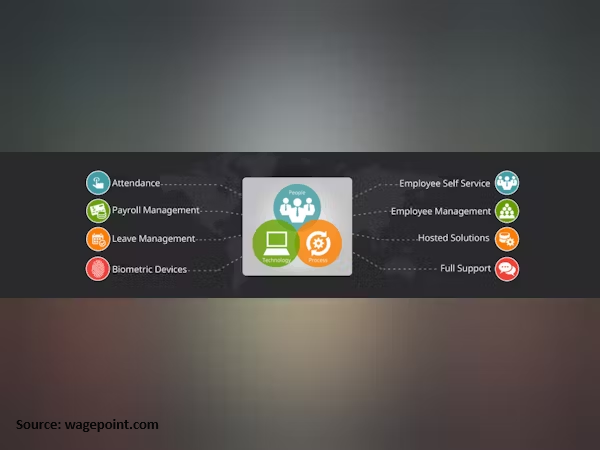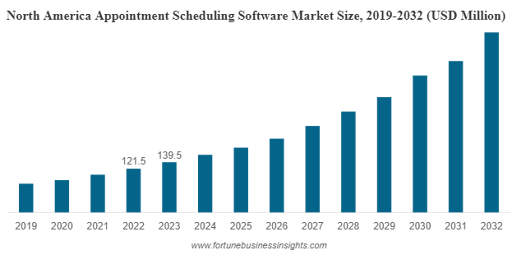Managing payroll effectively is crucial for the success and stability of any retail business.
Payroll mistakes can lead to employee dissatisfaction, legal issues, and financial discrepancies that harm a company’s reputation and bottom line.
This article uncovers the five most common payroll mistakes encountered in the retail sector.
It also suggests best practices designed to prevent these common payroll errors, ensuring your payroll process is accurate, efficient and on time.
What is the Payroll Process?
The payroll process involves entering payroll data, such as an excel spreadsheet into payroll system so that employees can receive their wages.
The processing component includes several tasks such as calculating hours worked, wages, taxable income, and producing checks or administering direct deposits to employees.
Accurate payroll management is critical for maintaining good employer-employee relations and workforce morale.
Employees expect to be paid accurately and on time, and any errors or delays in payroll can cause frustration, dissatisfaction and even voluntary turnover.
What Can Happen if Payroll Mistakes are Made?
Payroll mistakes can result in substantial fines, lawsuits, or government audits. For example, mistakes could lead to an IRS or Department of Labor investigation.
A study conducted by Ernst & Young (EY) found that 1 in 5 company payrolls regularly contain errors, with each mistake costing an average of $291. For a 1,000-employee business, this could amount to nearly $1 million spent annually on correcting preventable errors.
What’s more, avoidable mistakes such as miscalculated wages, late payments, or other inaccuracies negatively affect employees could damage company morale and employee trust.
What are the Most Common Retail Payroll Mistakes?
The payroll processing is prone to errors, but keeping mistakes to a minimum is critical for the benefit of employee morale, and your company’s reputation.
In order to avoid mistakes, the first step is knowing what they are, and how they occur. Here are the five most common payroll mistakes:
Mistake #1: Misclassifying Employees
What: Misclassification occurs when employees are incorrectly categorized as exempt from overtime or labeled as independent contractors instead of employees.
Cost: This mistake can lead to FLSA-related fines, loss of employee trust, and potential retroactive payments or adjustments to pay records.
Preventative Measures:
- Implement clear guidelines and policies for classifying employees.
- Stay updated on relevant labor laws.
- Seek legal guidance if unsure about employee classifications.
Mistake #2: Miscalculating Pay
What: Pay miscalculations occur due to errors in tracking hours, applying incorrect pay rates, or mishandling deductions and benefits.
Cost: Inaccurate paychecks can result in employee frustration, potential legal issues, and wasted time spent rectifying errors outside the regular payroll cycle.
Preventative Measures:
- Invest in reliable time-tracking systems.
- Double-check calculations.
- Provide training to payroll administrators on accurate pay calculations.
Mistake #3: Not Tracking Employee Hours and Overtime
What: Failure to accurately log employee hours and overtime can result from manual tracking methods, oversight during break times, or improper handling of off-duty activities.
Cost: Incorrectly recorded hours lead to incorrect payments, potential legal disputes over unpaid overtime, and additional time and resources spent on rectifying errors spanning multiple tax years.
Preventative Measures:
- Utilize automated time-tracking systems.
- Educate employees on proper time recording procedures.
- Conduct regular audits to ensure compliance with labor laws.
Mistake #4: Not Reporting Taxable Employee Compensation
What: Employers may overlook reporting various forms of taxable compensation, such as stock options, rewards, or personal use of company resources.
Cost: Failure to report taxable compensation can result in penalties for the organization and affected employees, as well as potential tax filing discrepancies and regulatory scrutiny.
Preventative Measures:
- Establish thorough reporting processes.
- Educate payroll staff on different forms of taxable compensation.
- Conduct regular reviews of compensation packages to ensure compliance with tax regulations.
Mistake #5: Poor Record Keeping
What: Records may become disorganized due to reliance on manual processes,
inadequate documentation, or lack of systematic record-keeping practices.
Cost: Disorganized records can lead to errors, delays in payroll processing, difficulties during audits, and potential legal issues related to missing or inaccurate documentation.
Preventative Measures:
- Implement automated payroll systems with integrated record-keeping features.
- Establish clear record-keeping policies and procedures.
- Conduct regular audits to maintain accurate and organized payroll records.
Companies Affected by Common Payroll Mistakes
Here are business case example that demonstrate the five most common payroll mistakes:
Example 1: Uber
Mistake: In 2015, Uber misclassified drivers as independent contractors to avoid providing employee benefits and complying with labor laws.
Cost: Misclassification deprived drivers of employee benefits such as minimum wage, overtime pay, and expense reimbursement, leading to legal challenges and public scrutiny.
Solution: Uber faced legal challenges and settlements, which led to changes in classification practices and the provision of some benefits to drivers while maintaining their status as independent contractors.
Example 2: University of California
Mistake: In 2017, The University of California miscalculated payroll, resulting in nearly 14,000 employees missing overtime payments.
Cost: Employees faced financial losses due to missed overtime payments, impacting morale and potentially leading to legal action and a $1.3 million dollar settlement with the department of labor..
Solution: The University of California likely took steps to rectify the miscalculations, ensure affected employees received the overtime pay owed, and implement measures to prevent similar errors in the future.
Example 3: Cleveland Cavalier
Mistake: In 2016, Inaccurate tracking of employee hours and payroll led the Cleveland Cavaliers to exceed their payroll limit, resulting in a $54 million luxury tax bill.
Cost: The Cavaliers incurred a significant financial penalty due to inaccuracies in tracking employee hours which impacted the team’s finances and potentially affected player contracts and operations.
Solution: The Cavaliers likely implemented improved payroll tracking systems to accurately monitor employee hours and payroll, preventing future violations and financial penalties.
Example 4: Ernst & Young
Mistake: In 2022, Ernst & Young failed to report wages and taxable employee compensation, causing 55,000 employees’ pay to disappear from their accounts.
Cost: Employees faced financial difficulties and uncertainty due to missing wages, impacting morale and potentially leading to legal action against Ernst & Young.
Solution: Ernst & Young likely conducted an investigation, corrected reporting errors, and compensated affected employees to rectify the issue and prevent similar occurrences in the future.
Example 5: Wisconsin Department of Corrections
Mistake: In 2017, The Wisconsin Department of Corrections had incomplete records, leading to the overpayment of a dozen employees.
Cost: The department incurred financial losses due to overpayment, which impacted budgetary allocations and potentially led to administrative challenges.
Solution: The Wisconsin Department of Corrections likely implemented measures to improve record-keeping practices, ensure accurate payroll processing, and prevent future overpayments.
Best Practices to Prevent Common Payroll Mistakes
There are some proactive steps businesses can take to minimize and avoid some of the most common payroll errors.
These best practices will help payroll staff focus on a few key items minimizing the possibility of human errors:
Misclassifying Employees:
- Regularly review and update classification criteria based on government guidelines.
- Conduct periodic audits to ensure accurate classification of employees and contractors.
- Seek legal advice or consult HR experts when uncertain about employee classification.
Miscalculating Pay:
- Implement automated payroll systems to accurately calculate wages, taxes, and deductions.
- Train payroll staff on proper calculation methods and provide ongoing education on tax laws and regulations.
- Utilize time and attendance software with built-in checks and balances to catch calculation errors and employee scheduling problems before they occur.
Not Tracking Employee Hours and Overtime:
- Implement time and attendance tracking systems to record employee work hours accurately.
- Train managers and supervisors on the importance of accurately tracking employee hours and enforcing overtime policies.
- Regularly review timekeeping records for discrepancies and address them promptly.
Not Reporting All Forms of Taxable Employee Compensation:
- Maintain detailed records of all employee compensation, including bonuses, commissions, and fringe benefits.
- Use integrated payroll systems to ensure all forms of taxable compensation are accurately reported to tax authorities.
- Regularly review tax regulations and update reporting procedures to remain compliant with tax laws.
Incomplete or Disorganized Records:
- Establish standardized record-keeping procedures and protocols for payroll documentation.
- Implement digital record-keeping systems to centralize and organize payroll records for easy access and retrieval.
- Conduct regular audits of payroll records to identify and address any discrepancies or gaps in documentation.
Time and Attendance Software Solves Common Retail Payroll Mistakes
Many businesses are moving towards adopting software to improve business functions and reduce human error. For instance, point-of-sale (POS) systems, inventory management solutions, and customer relationship management software (CRM), are all designed to optimize specific aspects of retail store operations.
In the case of payroll, scheduling software or, a time and attendance system such as TimeWellScheduled, can prevent common payroll mistakes by accurately tracking employee hours, organizing employee information and adhering to labor laws and regulations.
With its automated features, such as calculating total hours worked, including overtime and breaks, it minimizes the risk of underpayment or overpayment issues.
Also note that scheduling software prevents payroll mistakes by aligning staffing levels with fluctuating consumer spending trends. The aim is to have the right number of employees scheduled during peak periods while minimizing labor costs during downturns.
Moreover, real-time visibility into employee schedules allows managers to proactively manage staffing levels, reducing the chances of scheduling issues that could impact payroll.
The integration of a scheduling system facilitates accurate and timely payroll processing, reducing the dependency on manual data entry and minimizing the risk of human error or compliance issues.
Final Comments
When employees are paid on time and accurately, they feel appreciated and respected, which facilitates a positive and productive work environment.
Retail payroll staff that adopt best practices, such as utilizing reliable time and attendance software can significantly reduce the risk of common payroll mistakes.
The suggested best practices not only ensure accurate compensation for employees but also safeguard the organization against potential legal and financial repercussions.
With proper implementation and regular review, the five common payroll mistakes can become a thing of the past, allowing companies to focus on their core operations and mission.





